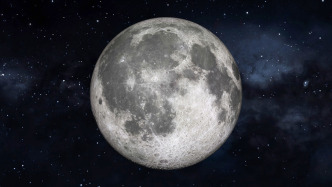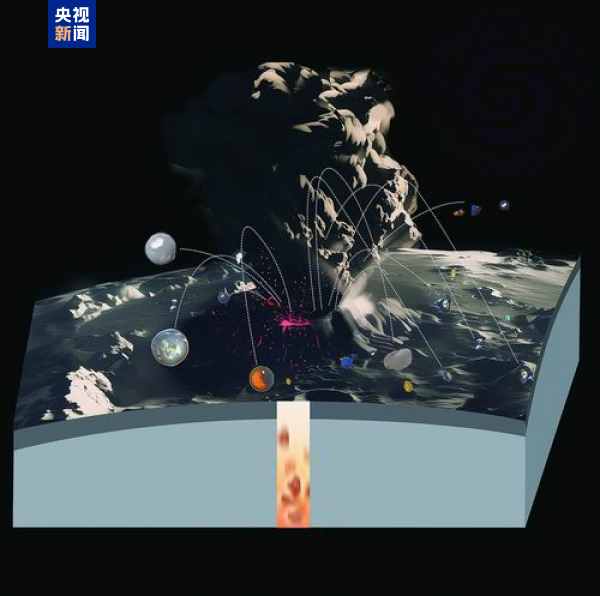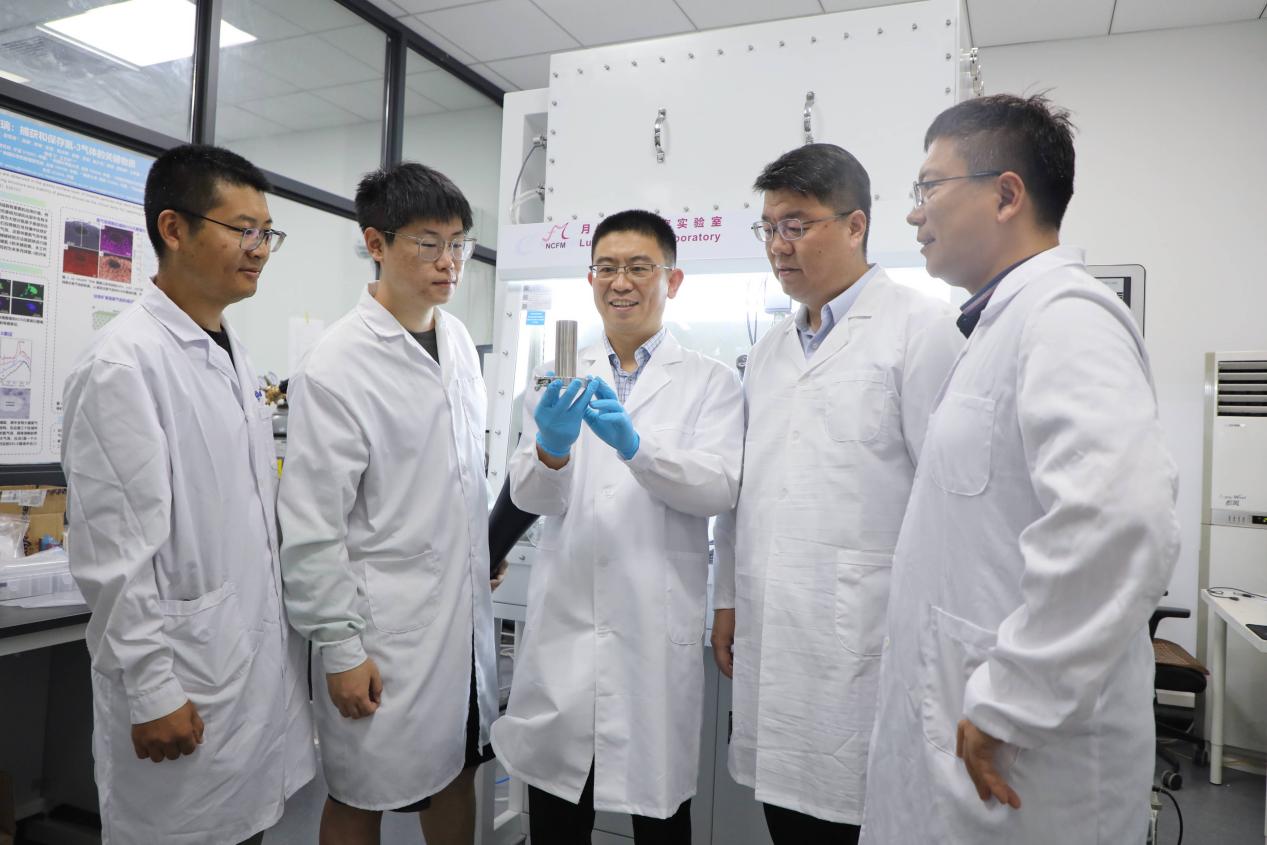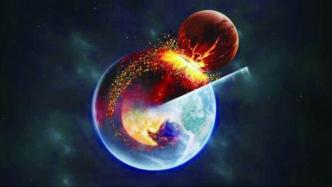
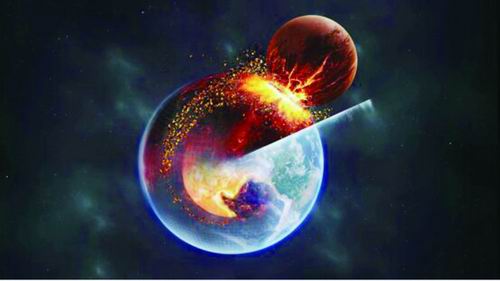
Studying the artistic illustration, today's heterogeneous bodies deep in the Earth's mantle may be remnants of the large collision event that led to the formation of the moon. Image source: Interviewee
Recently, Deng Hongping, associate researcher at the Shanghai Observatory of the Chinese Academy of Sciences, Yuan Qian, a postdoctoral fellow at the California Institute of Technology, and others published a paper in Nature, revealing the source of the huge anomalies deep inside the Earth.
"The earth suffered a big impact in its childhood, and the remnants of the impactor may still exist in the interior today." Although Deng Hongping summarized the content of this research to China Science News in just one sentence, the research revealed A mystery that has puzzled academic circles for many years—where did the moon come from?
This mystery has puzzled scientists for a long time
The moon is a satellite of the earth and the closest celestial body to the earth. But where did the moon come from?
The "big impact" hypothesis mentioned by Deng Hongping is the mainstream theory to answer this question - 4.5 billion years ago, a Mars-sized protoplanet Theia collided with the nascent Earth Gaia, and the moon was formed by the gradual aggregation and growth of the collision debris. Come. The energy contained in this collision is about 100 million times greater than the small celestial body impact event that caused the extinction of the dinosaurs. It reshaped the young Earth and may have left a deep imprint in the planet's mantle.
This hypothesis can not only well explain the dynamic properties of the moon and its unique material composition, but is also consistent with the collision growth theory of terrestrial planets.
However, through high-precision isotope analysis of Apollo lunar samples, scientists found that the composition of the earth's surface materials and the moon are highly similar. However, in the large impact simulation, the composition of the moon is dominated by the "extraterrestrial visitor" Theia, which should be somewhat different from the composition of the earth.
The source of this contradiction is that the two stars cannot be fully mixed during the collision.
In 2017, while studying for a PhD in astrophysics at the University of Zurich, Switzerland, Deng Hongping learned about this problem from his colleague Christian Reinhardt, and began to try to use new methods to simulate the material mixing of this process.
"The smooth particle hydrodynamics method is widely used in large collision simulations, but it has a high numerical viscosity and is not good at simulating subsonic turbulence and the material mixing caused by it." Deng Hongping said that although this flaw has become a computational There is a consensus in the field of astrophysics, but it has not attracted attention in the field of planetary science, and the optimization of old methods and the development of new methods have stalled.
Deng Hongping and others developed a new grid-free computational fluid dynamics method, which can more effectively capture the material mixing caused by weak turbulence. However, they failed to mix Gaia and Theia as uniformly as they hoped. During the impact, the material in Theia always tends to "float" in the upper half of Gaia and is unable to sink into Gaia's deep mantle in large quantities. At the same time, the upper half of Gaia heats up violently, forming a molten magma ocean.
This resulted in the post-collision Earth's mantle showing a layered structure. The upper mantle is a magma ocean, fully mixed with Gaia and Theia, while the lower mantle is basically solid and mainly retains the material composition of Gaia.
After discussing with geophysicists at the Swiss Federal Institute of Technology in Zurich, the research team came to a bold conclusion: the mantle layering formed 4.5 billion years ago may still leave traces in the current mantle, and at the same time, the evolution of layering Mantle models can better explain the similarities in surface material and lunar composition.
"If Gaia and Theia were completely mixed, it would be difficult for us to separate the two and study their respective properties. If this interesting layered structure can be preserved in some form, it will provide us with the opportunity to study the moon's properties. It provides important opportunities for the formation and even the evolution of the earth." Deng Hongping said.
In 2019, Deng Hongping and others submitted this research paper to Nature. After more than a year of grueling review, it was unfortunately rejected. Subsequently, they submitted the paper to the Astrophysical Journal (APJ), and it was quickly published.
This "cross-border" paper, which attempted to connect astronomy and earth science, attracted the attention of another collaborator, Yuan Qian.
Interdisciplinary cooperation forms a perfect closed loop
In the 1980s, earth scientists discovered that there were two huge anomaly areas at the bottom of the Earth's mantle. When seismic waves passed through them, the wave speed was significantly reduced. These two anomalies, which stretch for thousands of kilometers at the bottom of the Earth's mantle, are often called large low-velocity bodies. It remains unclear what processes formed the two anomalies, although most geoscientists believe the two regions may have higher densities due to their relative iron richness.
In 2019, at a seminar at Arizona State University in the United States, a professor questioned the "big impact" hypothesis of the formation of the moon - does the impactor Theia really exist? Why hasn't anyone found evidence of Theia's existence?
It was this question that gave Yuan Qian an idea: "Is the large low-speed body the remnant of Theia?"
After the meeting, Yuan Qian checked the relevant information and found that no one had proposed a similar hypothesis. Later, he collaborated with Arizona State University professor Li Mingming to verify this conjecture from the perspective of geodynamics. Their results support this conjecture, but they need to assume that the Earth's mantle was not completely melted after the "big impact". Most previous related papers believed that this impact basically caused the complete melting of the mantle due to algorithm and resolution problems.
At this moment, Yuan Qian saw Deng Hongping's latest APJ paper, which described the stratification of the Earth after the "big impact". This was the evidence he was looking for.
Therefore, Yuan Qian invited Deng Hongping to jointly explore the Theia material that entered the deep earth after the big collision. Prior to this, these Theia materials entering the deep earth have been ignored by Deng Hongping. After that, the two collaborated like a duck in water, forming a perfect closed-loop research loop.
Surprisingly, through in-depth analysis of previous large collision simulations and new higher-precision simulations, the research team found that Theia material with a mass equivalent to that of a large low-velocity body will enter the lower mantle of Gaia. Deng Hongping invited computational astrophysics expert Jacob Kegerreis to further confirm this conclusion using traditional smooth particle hydrodynamics methods.
In addition, the research team also calculated that these Theia mantle materials are rich in iron elements like lunar rocks, so they are denser than the surrounding Gaia materials. Therefore, they quickly sink to the bottom of the mantle and form two significant signs under the long-term convection of the mantle. A large low-velocity body that has survived 4.5 billion years of geological evolution and still exists stably above the core-mantle boundary.
This time, their paper was successfully accepted by Nature and selected as a cover article. Deng Hongping said: "Thanks to the cooperation of geophysicists, geochemists and astrophysicists, we can integrate the formation and evolution of the Earth-Moon system into the framework of the formation of terrestrial planets in the entire inner solar system, and even provide a basis for understanding Providing inspiration for the formation and habitability of exoEarths."
The publication of the paper is not the end. The explorations of Deng Hongping, Yuan Qian and others will continue to further enrich and verify their research.
Related paper information: https://doi.org/10.1038/s41586-023-06589-1
